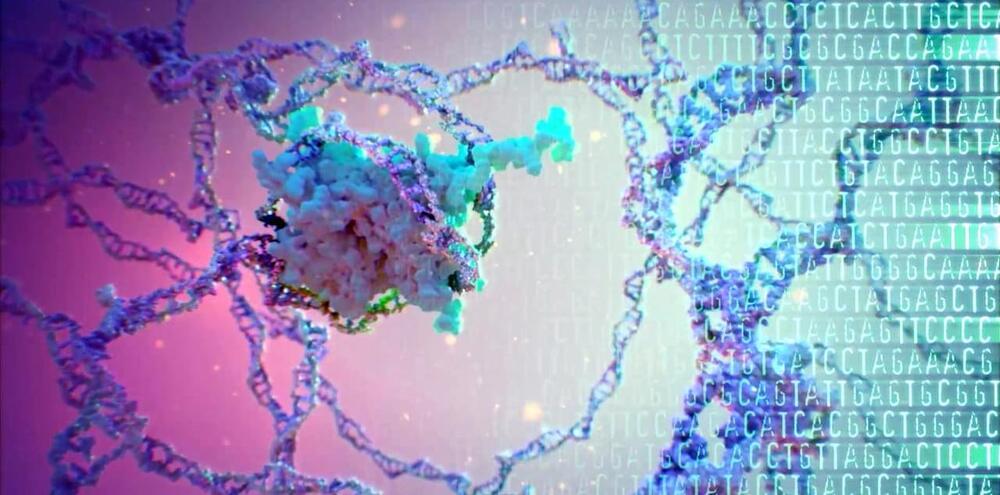Genetic analysis of 50,000-year-old Neanderthal skeletons has uncovered the remnants of three viruses related to modern human pathogens, and the researchers think they could be recreated.


Genetic analysis of 50,000-year-old Neanderthal skeletons has uncovered the remnants of three viruses related to modern human pathogens, and the researchers think they could be recreated.

Scientists have recently discovered thousands of active RNA molecules that can control the human body.
By Philip Ball
Thomas Gingeras did not intend to upend basic ideas about how the human body works. In 2012 the geneticist, now at Cold Spring Harbor Laboratory in New York State, was one of a few hundred colleagues who were simply trying to put together a compendium of human DNA functions. Their project was called ENCODE, for the Encyclopedia of DNA Elements. About a decade earlier almost all of the three billion DNA building blocks that make up the human genome had been identified. Gingeras and the other ENCODE scientists were trying to figure out what all that DNA did.

In a new study recently published by Science Advances, Michigan State University researchers reveal an unexpected genetic revelation about the sugars found in “tomato tar,” shedding light on plant defense mechanisms and their potential applications in pest control.
Tomato tar, a familiar nuisance of avid gardeners, is the sticky, gold-black substance that clings to hands after touching the plant. It turns out that the characteristic stickiness of the substance serves an important purpose. It’s made of a type of sugar called acylsugar that acts as a natural flypaper for would-be pests. “Plants have evolved to make so many amazing poisons and other biologically active compounds,” said Michigan State researcher Robert Last, leader of the study. The Last lab specializes in acylsugars and the tiny, hair-like structures where they’re produced and stored, known as trichomes.
In a surprising discovery, researchers have found acylsugars, once thought to be found exclusively in trichomes, in tomato roots as well. This finding is a genetic enigma that raises as many questions as it does insights.


Join us on Patreon! https://www.patreon.com/MichaelLustgartenPhDDiscount Links: Epigenetic, Telomere Testing: https://trudiagnostic.com/?irclickid=U-s3Ii2r7x…

The brain is one of the most complex entities in biology. For thousands of years, humans have wondered how the human brain works, but only in the past few years has technology evolved so that scientists can actually answer some of the many questions we have. What are the causes of brain disorders? How do our brains develop? How does the brain heal after a head injury? While we still have a long way to go before we can understand the many facets of the human brain, one technology – CRISPR – has allowed us to start answering these questions on a genetic level.
What is CRISPR?

What if someone handed you a tool and said that you could better the lives of people before their birth by changing their genes? Would you do it?
CRISPR-Cas9 is one such tool. It’s an efficient and effective gene-editing technology that works by tagging a section of DNA with an RNA segment, and then using a protein called Cas9 to cut the DNA at the specified point. Then, the cell’s own DNA machinery works to add or delete DNA.
This technology opens up the pathway to a variety of gene-editing applications, from eliminating HIV in living organisms to creating a potential cure for Huntington’s disease. There is especially high potential for single-gene disorders to be eradicated. For example, promising results from the successful removal of a gene known to cause fatal heart disease from the embryo will not only save lives but also prevent the passing down of the gene.

Down syndrome (DS) is one of the most prevalent genetic disorders in humans. The use of new approaches in genetic engineering and nanotechnology methods in combination with natural cellular phenomenon can modify the disease in affected people. We consider two CRISPR/Cas9 systems to cut a specific region from short arm of the chromosome 21 (Chr21) and replace it with a novel designed DNA construct, containing the essential genes in chromatin remodeling for inactivating of an extra Chr21. This requires mimicking of the natural cellular pattern for inactivation of the extra X chromosome in females. By means of controlled dosage of an appropriate Nano-carrier (a surface engineered Poly D, L-lactide-co-glycolide (PLGA) for integrating the relevant construct in Trisomy21 brain cell culture media and then in DS mouse model, we would be able to evaluate the modification and the reduction of the active extra Chr21 and in turn reduce substantial adverse effects of the disease, like intellectual disabilities. The hypothesis and study seek new insights in Down syndrome modification.
Keywords: Down syndrome, CRISPR/Cas9, Designed DNA construct, Poly D L-lactide-co-glycolide (PLGA), Nano-carrier, Chromosome 21 inactivation.

Summary: Preschool children actively influence their own development to align with their genetic dispositions. By examining how toddlers interact with their environment, including activities like reading and puzzles, researchers found that children’s preferences impact how they engage in cognitive stimulation at home.
This active involvement helps shape their brain development alongside environmental factors. The findings emphasize the dynamic interplay between genetics and environment in early childhood, challenging the traditional views of passive developmental processes.